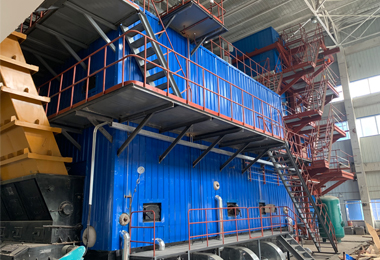
Nov . 22, 2024 00:59 Back to list
steam boiler temperature and pressure
Understanding Steam Boiler Temperature and Pressure
Steam boilers play a crucial role in various industrial applications, providing the necessary steam for heating, power generation, and chemical processes
. Two critical aspects of a steam boiler’s operation are temperature and pressure, which must be carefully monitored and controlled to ensure safety, efficiency, and reliability.The temperature of steam within a boiler is directly related to its pressure. According to the principles of thermodynamics, as the pressure increases, so does the temperature of the steam. This relationship is described by the steam tables, which provide key data for engineers and operators to understand the behavior of steam at different pressures and temperatures. For example, at sea level, water boils at 100°C (212°F). However, at higher pressures, the boiling point of water increases, meaning steam can be generated at much higher temperatures without turning into water.
Operating a steam boiler at high temperature and pressure can enhance its efficiency and performance. Higher pressures result in a greater energy content within the steam, which can translate to more work done in turbines or more effective heating in industrial processes. However, this comes with significant safety risks. High-pressure steam can cause catastrophic failures if a boiler is not properly maintained or if safety protocols are ignored.
steam boiler temperature and pressure

To manage the temperature and pressure effectively, steam boilers are equipped with various safety and control mechanisms. Pressure relief valves are vital safety devices that prevent excessive pressure buildup by releasing steam when it reaches a predetermined limit. Additionally, temperature sensors and pressure gauges provide operators with real-time data, allowing them to adjust burner operations and fuel flow to maintain optimal conditions.
Regular maintenance is essential for ensuring that a steam boiler operates safely within its design parameters. Inspections should include checking for signs of wear, corrosion, and potential leaks, particularly in high-stress areas like the boiler shell and piping. Furthermore, water treatment is crucial to prevent scaling and corrosion, which can significantly affect both temperature and pressure readings. Proper treatment and conditioning of boiler feedwater help maintain efficiency and extend the boiler’s lifespan.
Operators must also be trained to understand the implications of temperature and pressure changes within the system. For example, rapid fluctuations can indicate underlying issues that may require immediate attention. Operators need to be vigilant not only for compliance with safety standards but also for the effective operation of the boiler.
In conclusion, understanding the dynamics of steam boiler temperature and pressure is essential for efficient and safe operation. The correlation between temperature and pressure affects not just the performance of the boiler but also the safety of the entire operation. By maintaining equipment properly, employing safety mechanisms, and training operators effectively, industries can harness the power of steam while minimizing risks associated with high-pressure steam systems. With ongoing advancements in technology and methodologies, the future of steam boiler operation looks promising, ensuring both efficiency and safety for the industries that rely on this vital resource.
-
High-Efficiency Commercial Oil Fired Steam Boiler for Industry
NewsJul.30,2025
-
High-Efficiency Biomass Fired Thermal Oil Boiler Solutions
NewsJul.30,2025
-
High Efficiency Gas Fired Thermal Oil Boiler for Industrial Heating
NewsJul.29,2025
-
High-Efficiency Gas Fired Hot Water Boiler for Sale – Reliable & Affordable
NewsJul.29,2025
-
High Efficiency Biomass Fired Hot Water Boiler for Industrial and Commercial Use
NewsJul.29,2025
-
High-Efficiency Biomass Fired Hot Water Boiler for Industrial Use
NewsJul.28,2025
Related PRODUCTS






















